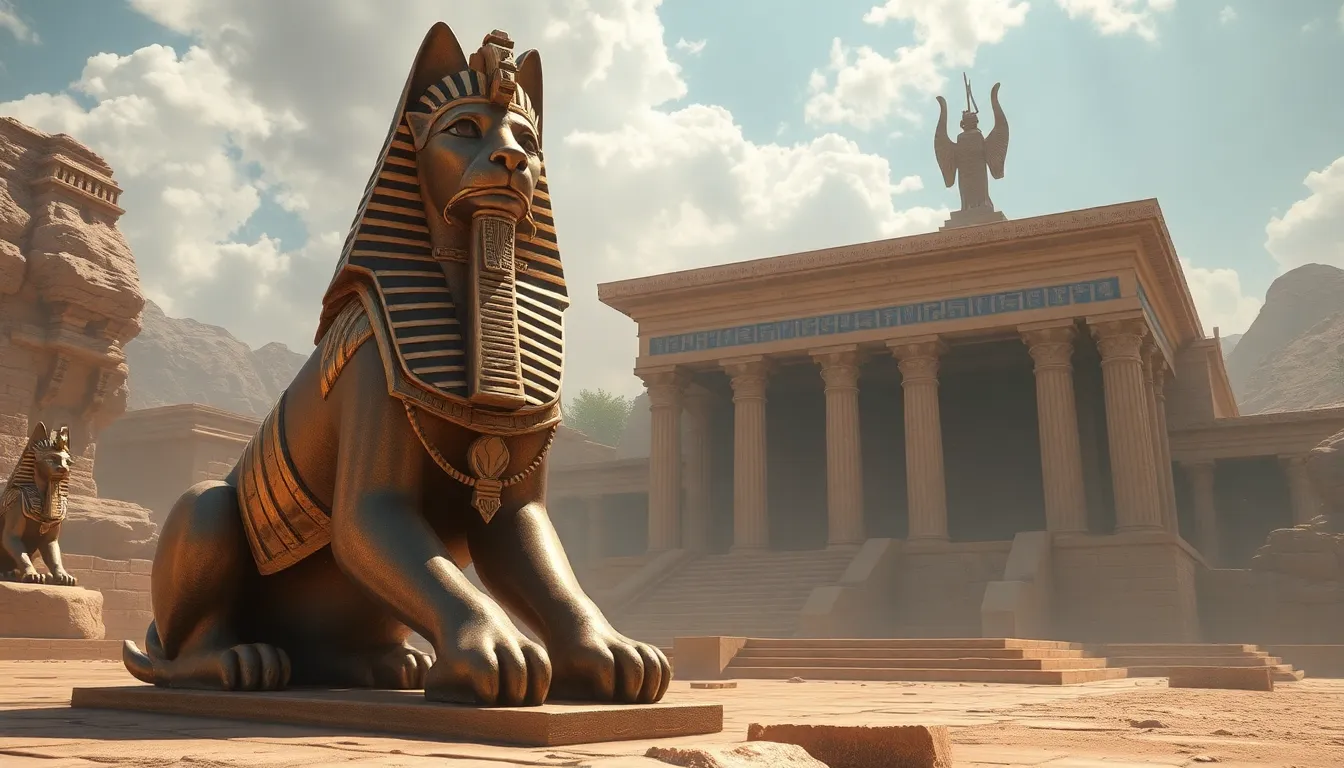The Temple of Sekhmet: The Lioness of Healing and War
I. Introduction
In the rich tapestry of Egyptian mythology, few deities embody the duality of healing and destruction quite like Sekhmet. Often depicted as a lioness or a woman with a lioness head, she represents the fierce and protective aspect of divine power. This article delves into the significance of Sekhmet as both a healer and a warrior, ultimately exploring the historical and cultural importance of the Temple of Sekhmet.
The dual roles of Sekhmet as a healer and a warrior underscore her significance in ancient Egyptian society. As a goddess of war, she was feared and respected, while her healing attributes made her a figure of hope and restoration. This article aims to provide a comprehensive overview of the Temple of Sekhmet, its historical context, its symbolism, and its lasting legacy in both ancient and modern cultures.
II. Historical Context of the Temple of Sekhmet
The Temple of Sekhmet, located in the city of Karnak, is one of the most significant religious sites in ancient Egypt. The temple complex is characterized by its massive stone structures, intricate carvings, and vast courtyards that once bustled with worshippers and priests.
Construction of the temple is believed to have begun during the reign of Amenhotep III in the 14th century BCE and was continued by subsequent pharaohs, including Ramses II. The temple’s architecture reflects the grandeur of the New Kingdom, showcasing the Egyptians’ advanced engineering skills and their devotion to their gods.
Key figures associated with the Temple of Sekhmet include the pharaohs who commissioned its construction and the priests who conducted rituals and maintained the temple. These priests held significant influence, acting as intermediaries between the goddess and the people, ensuring that Sekhmet’s blessings were bestowed upon the land.
III. The Symbolism of Sekhmet
In ancient Egyptian culture, the lioness was a powerful symbol of strength, ferocity, and protection. Sekhmet’s depiction as a lioness emphasizes her role as a fierce protector of the pharaoh and the nation.
- Healing and Medicine: Sekhmet was revered as a goddess of healing, often invoked in prayers for health and recovery. She was believed to possess the knowledge of medicinal herbs and the ability to cure diseases.
- Warrior Aspect: While she was a goddess of healing, her warrior aspect made her a formidable force in battle. Sekhmet was seen as a protector of the pharaoh, inspiring troops and ensuring victory in combat.
IV. Rituals and Worship Practices
Rituals and worship practices dedicated to Sekhmet were integral to her veneration. Daily rituals in the temple included offerings of food, incense, and prayers, performed by priests to honor the goddess and seek her favor.
Several festivals celebrated Sekhmet, with the most notable being the Feast of Sekhmet. This festival involved grand processions, music, dance, and the offering of sacrifices to appease her dual nature.
Healing practices were also a significant aspect of Sekhmet’s worship. Priests often utilized rituals that invoked her name and power to facilitate healing, combining spiritual and physical remedies to treat ailments.
V. Sekhmet’s Role in Ancient Egyptian Society
Sekhmet’s influence extended beyond the temple walls into the very fabric of ancient Egyptian society. Her association with medicine and healing established her as a crucial figure in healthcare practices.
- Influence on Medicine: Sekhmet’s healing attributes inspired medical practitioners to develop treatments and rituals, leading to advancements in ancient Egyptian medicine.
- Military Symbolism: During times of war, Sekhmet was invoked for her protective powers, symbolizing strength and victory on the battlefield.
- Royal Propaganda: Pharaohs often aligned themselves with Sekhmet, utilizing her image to convey their strength, divine right to rule, and military prowess.
VI. Artistic Representations
The artistic representations of Sekhmet are abundant throughout ancient Egypt. Iconography often depicts her as a lioness or a woman with a lioness head, symbolizing her fierce nature.
- Temple Art: Inside the Temple of Sekhmet, intricate carvings and reliefs illustrate her stories, showcasing her dual nature as both a healer and a warrior.
- Sculptures: Statues of Sekhmet were commonly placed in temples, serving as focal points for worship and veneration.
- Later Art: Sekhmet’s image continued to inspire artists in subsequent periods, reflecting her lasting significance in Egyptian culture.
VII. Modern Interpretations and Legacy
Today, the Temple of Sekhmet remains a focal point for Egyptologists and historians, offering insights into ancient religious practices and societal values. Its ruins attract tourists and scholars alike, eager to learn about its storied past.
Sekhmet’s influence persists in modern healing practices, where her name is invoked in various alternative medicine therapies that emphasize the balance of strength and healing. Furthermore, her lioness image has become a symbol in popular culture, representing empowerment and fierce independence.
VIII. Conclusion
In summary, Sekhmet stands as a powerful figure in Egyptian mythology, embodying the complexities of healing and warfare. The Temple of Sekhmet is a testament to her significance, reflecting the ancient Egyptians’ reverence for the goddess and her duality.
As we reflect on the enduring legacy of Sekhmet, it becomes clear that her relevance transcends time. Whether as a symbol of healing, a protector in battle, or an inspiration in modern culture, Sekhmet continues to captivate the imagination and spirit of people around the world.




